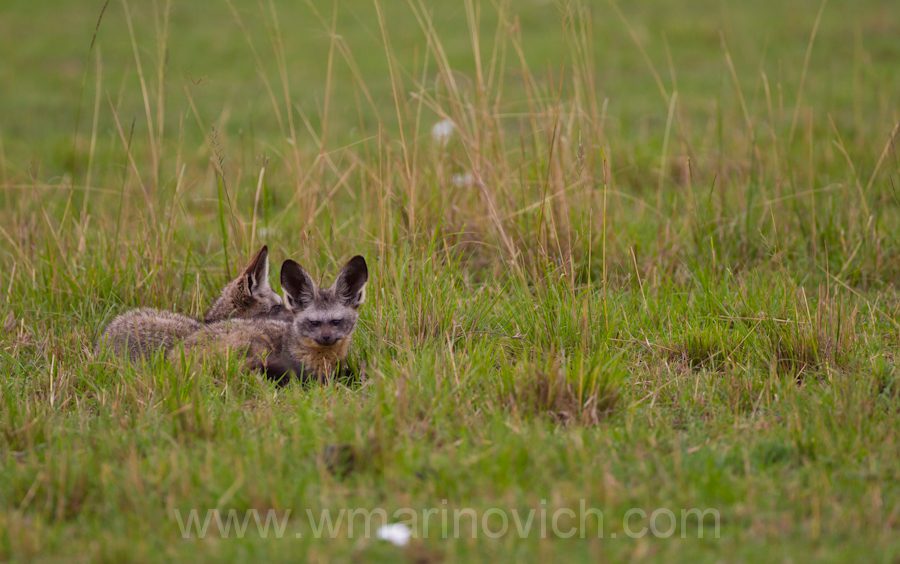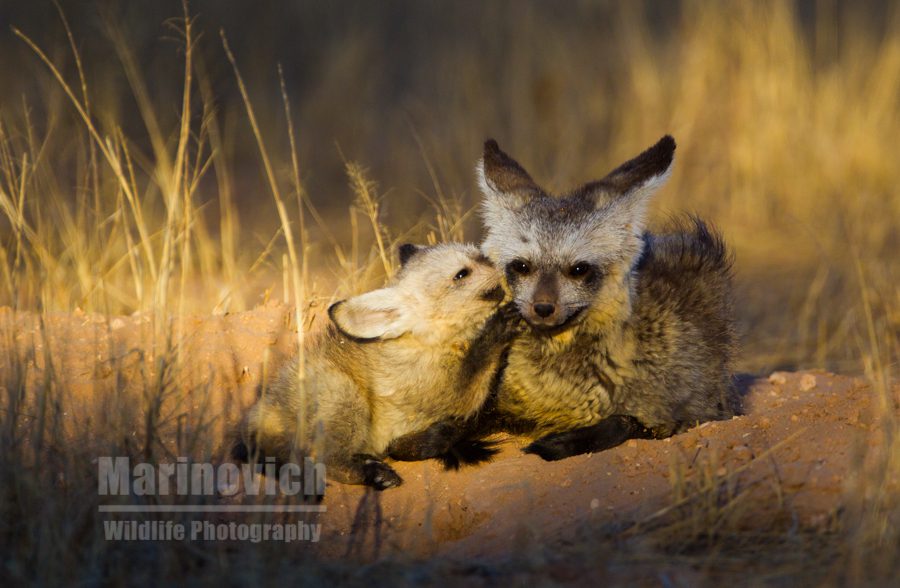A Childhood Fantasy to see the Bat-eared Fox
My childhood fascination with the Bat-eared Fox was a family inherited trait that I still cannot fully understand or explain. My earliest recollection of hearing about this little fox can solely be laid at the feet of my uncle. After having a few beers, he would triumphantly announce that he was going to buy a Bat-eared Fox as a pet. In later years I realised that it was clearly the beer talking, but I would eagerly await visits to his house, fully expecting him to have a new pet. I know of no reason why he selected this particular species as a topic of frivolity, but the fascination was entrenched in my young mind.
The library I visited at the time (before the internet) showed this little dog-like creature with big ears, a black face mask and a bushy tail. I couldn’t wait to see it in the wild someday.





Seeing them for the first time
On my recent trip to Kenya’s Masai Mara to photograph the wildebeest migration, I caught my first glimpse of this small fox. It was darting around with his ears tipped forward, listening intently to all manner of sounds on the ground in front of it. The running about was only punctuated with its frequent and random ‘stop and pounce’ behaviour. I was too fascinated to get any photos and would have to wait for the following day to get any decent images.
One of the most important things you can have in the Mara is a driver who not only understands the variety of species you will encounter but also knows how to approach them in a jeep so that you can get decent pictures without causing stress to the animal. Dixon was such a driver. He realised that we wanted to see more of these little foxes and told us of a place where there might be more.
The following afternoon we drove to an area of open savannah grassland, and while taking photos of Eland and Thompson Gazelle, we spooked two Bat-eared foxes from their afternoon resting spot. They quickly ran to their nearby underground den and Dixon slowly got the vehicle in a position to get some banker shots. After a few minutes, the large ears popped up, and I got my first photos. We stayed in that position for a while before Dixon edged us even closer. The foxes lay unperturbed and dozed off in the afternoon sun. We managed to get some great portraits, and it was special to be able to spend so much time with them.
Interaction with a Black-backed Jackal
Two days later we came across another group of three foxes, and although they were more skittish, Dixon performed his magic again. I got more shots of them lying together in the cool morning dew before they bolted for no apparent reason.
They headed straight for a hole in the ground and no sooner had they reached it when a Black-backed Jackal came running to guard what was conceivably its den. When it reached about twenty metres away from the foxes, it suddenly lay down and watched them intently. I had no prior knowledge of these species tolerating each other, but the three foxes left the den and went over to where the Jackal was lying. After sniffing around him, one of them lay down less than 2 metres away. It was great to see these two species interacting that way.


In November of the same year, I went to the Kgalagadi Transfrontier Park in South Africa for an extended trip. These are self-driving trips, and you’re able to spend more time with the southern foxes than their Mara’s cousins. I feel so lucky to have seen both sub-species, and it proves that your childhood fantasies can come true.


FACTS:
Kingdom: ANIMALIA
Phylum: CHORDATA
Class: MAMMALIA
Order: CARNIVORA
Family: CANIDAE
Scientic name: Otocyon megalotis
2 sub-species exist:
Otocyon megalotis virgatus (Sudan, Ethiopia, Somalia, Uganda, Kenya)
Otocyon megalotis megalotis (Namibia, Botswana, South Africa)
- The Bat-eared Foxe is more dainty than the Jackal and stands 30cm at the shoulder. Its total length of about 60-80cm with an average weight of 5Kg.
- The ears of a Bat-eared Fox are about 13cmx10cm wide
- They have a dense coat of hair that moults once a year. A beige grey in colour with black highlights and a bushy tail.
- They prefer drier arid areas of Eastern and Southern Africa where they forage for small mammals, insects, fruit and carrion. They are likely to pounce at the slight noise in the grass.
To read more photographic stories, see my latest photos, benefit from print giveaways and free gifts, please subscribe to the monthly newsletter










I am wondering if you can make this bat-eared fox as your pet? By the way, I like your pictures they are so clear and lively. May I know what camera did you use?
Hello George.
Not sure if you could make them a pet, but then they are better out in the wild.
I shoot with a Canon 1D mk4 and a 5D mkII
thanks for leaving a comment
Amazing photographs! Thank you for the natural history on this enchanting fox and also for your experiences on getting pictures of them.
Nanina
My pleasure Nanina.
Thankyou for taking the time to stop by
Regards
Wayne
Hi,
I was searching the Internet and found your awesome blog.
You got some great portrait shot of the foxes there, Wayne! Interesting reading too, I love them as well.
Hi Wayne, great pics, good read. First shot, in early moult, great timing for you. Technical data neat idea. I only have slides of BEF’s ( I need to digitise a huge number of slides, soon!)Thank you for the kind words! Taking Oz family on safari to Lion Sands and Kaparma 23 Oct onwards. Hope to ask locals for BEF sites! Take care. Vivian
Fasinating!!!
[…] to get some shots of the lot. The migration aside, I loved the close encounters we had with the Bat-eared Foxes, and the great fun we had taking the safari vehicles through the swollen river – not all vehicles […]